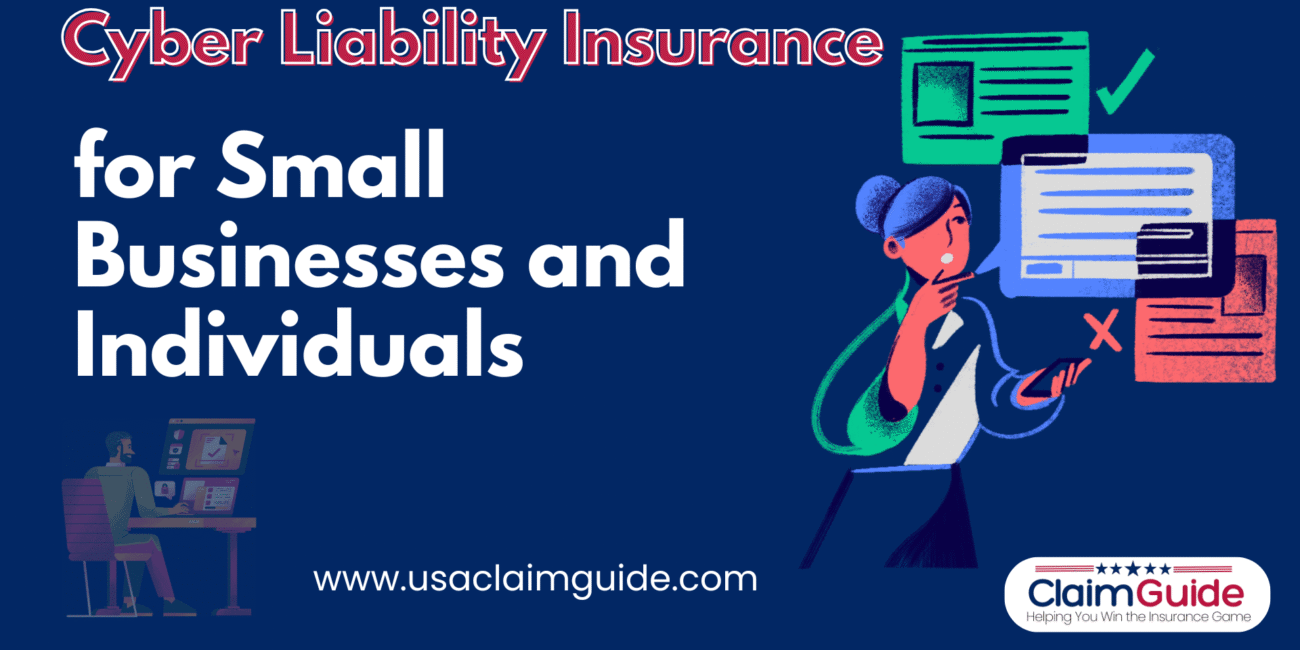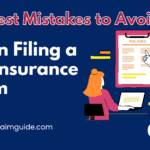In today’s hyper-connected world, cybersecurity threats in the U.S. are not just growing they’re evolving. From phishing scams and data breaches to identity theft and ransomware, the risk landscape is more complex than ever. What was once the concern of only large corporations has now become a critical issue for small business owners, freelancers, and everyday individuals in the United States. As digital dependency deepens, so does the need for a new kind of protection: Cyber Liability Insurance in the U.S..
Unlike general liability insurance, which covers physical damages or bodily injury, cyber liability insurance is tailored to shield against financial losses due to cyberattacks, data theft, and digital fraud. Whether you’re running an e-commerce store, a remote consultancy firm, or simply managing your personal online presence, your exposure to cyber risk is significant and growing.
With the rise of cloud-based operations, remote work, and mobile technology, traditional insurance no longer addresses the unique vulnerabilities tied to digital systems. That’s why more U.S.-based businesses are actively searching for affordable cyber insurance for small businesses, while individuals seek personal cyber liability insurance plans that protect their identity, financial data, and online activity.
As regulatory requirements tighten and cyber incidents become more expensive to resolve, many U.S. companies are turning to cyber liability insurance policies with data breach coverage to fulfill compliance standards and protect customer trust. But more than just a legal safety net, this type of insurance has emerged as a competitive necessity in today’s digital economy.
What makes Cyber Liability Insurance in the U.S. especially important is not just its role in damage control but its ability to fund expert response teams, cover legal expenses, and mitigate long-term reputation harm. It’s a smart, strategic layer of defense that supports operational continuity, regulatory compliance, and peace of mind.
As we explore the full scope of cyber liability insurance in the sections that follow, remember: it’s not just an optional policy it’s a core pillar of responsible digital risk management in a world that increasingly lives, works, and transacts online.
Cyber Liability Insurance : A Complete Guide for Businesses and Individuals
In today’s hyper-connected world, cyber threats are becoming increasingly sophisticated and costly. From data breaches to ransomware attacks, the risks are real and often financially devastating. This is where Cyber Liability Insurance in the U.S. comes into play. Whether you’re a small business owner, a tech startup, or even an individual concerned about digital identity theft, understanding cyber insurance is essential.
This comprehensive guide will explore what cyber liability insurance is, who needs it, what it covers, how much it costs, how to claim it, and everything in between.
What Is Cyber Liability Insurance?
Cyber Liability Insurance is a specialized form of insurance that helps protect individuals and organizations from the financial consequences of cyber incidents. These may include data breaches, ransomware attacks, identity theft, business interruption, and other digital threats.
Cyber insurance covers legal fees, investigation costs, customer notification, credit monitoring, data recovery, and even public relations expenses to manage reputation damage.
Who Needs Cyber Liability Insurance?
In the U.S., cyber liability insurance is increasingly seen as a necessity rather than a luxury. Here’s who should seriously consider getting covered:
- Small and medium-sized businesses (SMBs): These are prime targets due to often limited cybersecurity infrastructure.
- Healthcare providers: HIPAA violations and patient data breaches can be costly.
- Retailers and e-commerce businesses: Customer credit card and payment information is frequently targeted.
- Financial services firms: Banks, fintech companies, and accounting firms deal with sensitive financial data daily.
- Law firms: Client confidentiality and proprietary data must be protected.
- Technology companies: As digital service providers, they are directly liable for tech-related incidents.
- Freelancers and consultants handling client data.
- Individuals: Especially those with a strong online presence, high net worth, or digital assets.
Why Cyber Liability Insurance Is Important
The digital economy in the U.S. is thriving, but with that comes exposure to cyber risks. Here’s why Cyber Liability Insurance in the U.S. is a critical safeguard:
- Cybercrime is on the rise – With millions of attacks annually, no one is immune.
- High cost of recovery – Data breach costs in the U.S. average over $4.45 million per incident (IBM 2023 Report).
- Legal compliance – Many states have data protection laws requiring breach notification.
- Reputation management – A breach can destroy consumer trust.
- Business continuity – Insurance helps resume operations quickly with less financial damage.

What Does Cyber Liability Insurance Cover?
A typical cyber insurance policy may include the following coverages:
1. First-party coverage
These are losses directly suffered by the insured:
- Data recovery and restoration
- Business interruption and lost income
- Cyber extortion (ransomware payments)
- Notification costs to customers
- Credit monitoring services for affected clients
- Reputation management and public relations
2. Third-party liability
This covers damages for which the insured is held liable:
- Lawsuits from clients or customers
- Regulatory penalties and legal defense costs
- Settlements for privacy violations or data leaks
- Failure to protect client information
What Does Cyber Insurance Not Cover?
While cyber liability insurance offers broad protection, it doesn’t cover everything. Common exclusions include:
- Pre-existing incidents or known breaches
- Poor cybersecurity hygiene or lack of security measures
- Bodily injury or physical property damage
- Loss of intellectual property
- Criminal prosecution fines (in most cases)
- Employee negligence or insider threats (in certain policies)
- Losses due to war or acts of terrorism
Always read the fine print to understand policy exclusions.
Also Read: Business Interruption Insurance: Covers, Payout, Claim and more
How to Get Cyber Liability Insurance
Securing Cyber Liability Insurance in the U.S. involves a few essential steps:
- Assess your risk – Conduct a cybersecurity audit to determine vulnerabilities.
- Choose a provider – Reputable insurers include Chubb, Travelers, Hiscox, Nationwide, and The Hartford.
- Get quotes – Compare policy limits, deductibles, and coverage types.
- Complete a questionnaire – Insurers often require detailed cybersecurity practices and IT infrastructure data.
- Implement cybersecurity improvements – You may be required to follow certain security protocols.
- Purchase and customize – Select policy limits based on risk level and industry standards.
How Much Does Cyber Liability Insurance Cost?
The cost of Cyber Liability Insurance in the U.S. can vary widely depending on:
- Size and type of business
- Industry sector
- Revenue and number of customers
- Type of data handled (e.g., medical, financial)
- Existing cybersecurity measures
- Claims history
Average Premiums:
- Small businesses: $500–$1,500 annually for basic coverage
- Mid-sized businesses: $2,000–$5,000 annually
- Large enterprises: $10,000 and up
Higher-risk sectors like healthcare and finance often face steeper premiums.
Cyber Liability Insurance for Small Business (In Brief)
Small businesses are among the most vulnerable to cyberattacks but often lack the resources to bounce back. Cyber liability insurance offers them a financial safety net by covering losses related to data breaches, cyber extortion, and IT forensics.
Many small business policies are bundled with Business Owner’s Policies (BOPs) or sold as endorsements.
Cyber Insurance for Individuals (In Brief)
Individuals, especially those with online businesses or high-value digital identities, can benefit from cyber insurance. Personal cyber coverage may include:
- Identity theft recovery
- Cyberstalking support
- Online fraud protection
- Data restoration
- Legal expense coverage for privacy breaches
Insurers like AIG, Chubb, and Nationwide offer personal cyber insurance plans in the U.S.
When Can Individuals Claim Cyber Liability Insurance?
Individuals can file a claim when they experience:
- Identity theft
- Online fraud (e.g., bank account compromise)
- Unauthorized access to home networks or devices
- Ransomware attacks demanding personal data
- Harassment or defamation through digital platforms
The claim must be documented with evidence, and policies often have a deductible.
How to Claim Cyber Liability Insurance Online
Claiming cyber insurance online is straightforward:
- Log in to your insurer’s portal or contact them via email or phone.
- File an incident report describing what happened.
- Submit necessary documentation (evidence of loss, police report, IT forensic analysis).
- Cooperate with the insurer’s investigation – including interviews and audits.
- Track your claim status through the portal or via a claim manager.
- Receive settlement once approved.

Documents Needed for Cyber Liability Insurance Claim
Depending on the provider, you may be asked for:
- A copy of the insurance policy
- Proof of breach or attack (e.g., logs, screenshots)
- Incident report from IT department or third-party vendor
- Cyber forensics report
- Communications with affected clients/customers
- Police report (for identity theft or cybercrime)
- Financial loss statements
- Legal notices, if applicable
Government Resources & Helpful Links
Here are some U.S. government and industry websites with resources related to cyber liability and cybersecurity:
- U.S. Cybersecurity & Infrastructure Security Agency (CISA)
https://www.cisa.gov - Federal Trade Commission (FTC) – Cybersecurity for Small Business
https://www.ftc.gov/tips-advice/business-center/small-businesses/cybersecurity - National Institute of Standards and Technology (NIST)
https://www.nist.gov/cyberframework - IdentityTheft.gov (For individuals dealing with personal cybercrime)
https://www.identitytheft.gov - USA.gov – Online Safety and Security
https://www.usa.gov/online-safety
Additional Tips and Insights
- Bundle policies: Consider bundling cyber with general liability for savings.
- Regularly update software and security patches.
- Employee training: Many breaches happen due to human error.
- Back up data: Ensure offsite or cloud backups are frequent.
- Incident response plan: Prepare a step-by-step recovery plan in advance.
Conclusion
As digital threats evolve, being proactive is not optional it’s essential. Cyber Liability Insurance in the U.S. offers a safety net for businesses and individuals alike. By understanding your cyber risk and investing in the right protection, you can navigate today’s digital landscape with confidence and resilience.
Whether you’re an entrepreneur, IT professional, or a privacy-conscious individual, don’t wait until it’s too late. Act today to secure your digital future.
Also Read: Liability Insurance : What It Covers, Why You Need It, & How Much It Really Costs
Other Articles:
Employer Life Insurance Explained: What It Covers and What It Doesn’t
Life Insurance Tax : What Beneficiaries and Policyholders Need to Know











